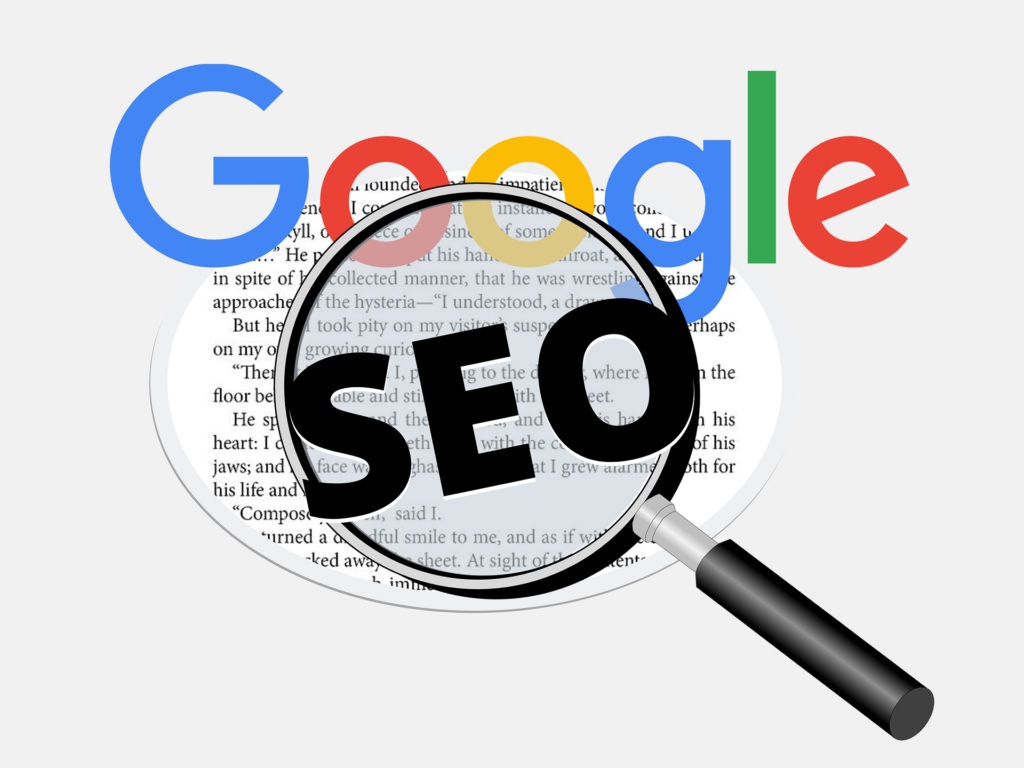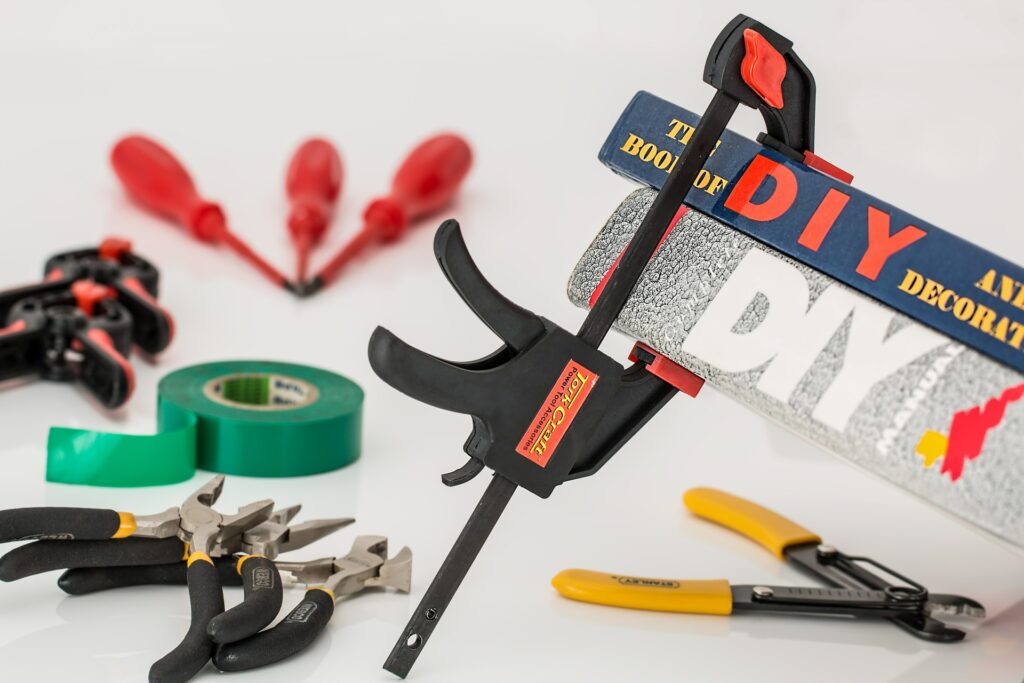
If you hear the term SEO being banded around but don’t understand what it means in practice, this article is for you. From exploring the value of SEO through to identifying 8 ways of improving your own website to help it achieve that page one search ranking, following the steps laid out in this article will help to improve your website’s visibility and give it the best possible chance of being found by the right, active audience.
What is Google SEO and why is it important?
Google is always adding and changing its algorithm for being well ranked, but SEO (Search Engine Optimisation) is always up there as one of the most important things to focus on. What SEO does is help ensure that your entire website is as well written and laid out as possible for Google to assess it and rank it as high in value and strong in user experience. This in turn means that when users search for the keywords your website is built around, your site will be ranked highly by Google and will show up early in the search results – ideally on page one.
This is when organic traffic is at its highest and click through rates are at their most competitive – after all, does anyone really search for a website beyond the first page of search results? We all know that page one is where the real value and quality lies.
Let’s take a closer look at how to get there.
The 8 steps to Page One
The following steps are all things you can do to give your website the credibility and assurance of quality that Google looks for in ranking different sites. Remember that Google has always been invested in the user experience, and with the release of the new Core Web Vitals algorithm has become even more focussed on how a website creates a seamless and productive experience. As such, you will find that some steps are content based while others are all about the customer journey.
- Identify your top ranking pages
We call these your ‘threshold pages’ – pages that are on the cusp of ranking at Page One status for certain search results but haven’t quite made it. These are the pages to focus on first, because they are already proven to be delivering high quality, credible content… we just need to give them that extra push to Page One.
- Identify and explore the direct competition
This isn’t about just knowing which brands and businesses are your competitors – this means identifying your threshold pages and then identifying those same pages on other sites and assessing why there are ranking more highly than yours.
We often hear business coaches saying that you don’t need to build a new strategy or work frame from scratch – you can simply take the structure of what someone has already built and adjust it for your own business. And that’s exactly what you need to do here.
- Look at the way you use internal linking
In a breakdown of things to do to improve your website, this is one of the easiest to implement and can lead to a significant improvement in the way your site is viewed and assessed by Google. Internal linking refers to the way that different webpages on your own site allude to other pages and posts on your site – creating a chain or network of different experiences that customers can follow to enhance their understanding of certain topics.
A great way of improving this includes linking within blogs and guiding the reader towards certain products, services, or even other blogs that you mention within the content.
- Mobile optimisation!
This one needs no explanation. Mobile optimisation is one of the most important things you can do for the modern user – and is a huge factor in Google’s ranking algorithm.
- Breathe new life back into previously high performing content pages
This is another point which takes us back to that “don’t reinvent the wheel” mindset. If you have pages that have performed highly in the past, take a look at how and why, and see what you can do to build them back up again into a high performing position.
Some things you can do include building new internal links into content, updating the copy and imagery, and adding new features or keywords.
- Build a network of external links
One of the best ways of becoming a reputable source in your industry is building a network of external links between your site and other well regarded sites in the same industry. Once one or two other sites link and mention your website within their own blogs, you will find your SEO ranking jumps right up – as Google will see that other reputable sources trust you and see you as a valuable resource.
This is something you will have to actively pursue for optimum results, but it’s worth it!
- Update your navigation
Reassess your customer journey and look at how far away the quality content is from the homepage. Remember that the longer the journey, the more customers you will lose along the way – and it’s important to keep people engaged as they go. Identify your most valuable and popular pages and turn them into the main pages on your website – rather than second or third tier pages that have to be searched for and found.
Make the process as easy as possible and watch as the reader rates stack up.
- Look into the value of Featured Snippets
This is a feature of Google Search which pops one of the top search results into a featured box – a bit like being given a gold star for content and jumping straight to the top of the class. There is no defined way of getting there and there are no guarantees you will make it, but we recommend analysing the structure of past snippets and replicating their format and the way they use keywords as a good starting point.
For more tips on giving your website the boost it deserves to reach Page One, get in touch!

Is there anything worse than knowing what your website or digital marketing needs, but at the same time having no idea where to start? Most of the time this lack of knowledge leads you down a rabbit hole of outsourcing, external audits and costly solutions, and time consuming online guides – which promise the world and deliver very little.
We know how frustrating the world of online marketing and the internet can be – because we’ve been there, and we’ve seen it all. No matter how great your content is, or how much value you are practically giving away for free, if you don’t do exactly what search engines like Google want you to do, they can hide you away and ensure that no one visits your site. Not only is this disheartening, but it’s mighty bad for business.
So, you call in auditors. They tell you where you’re going wrong, and then start throwing anagrams at you – namely SEO and PPC.
Well, this article looks at what’s holding you back before you even get to the content itself and considers the steps to take to resolve your issues. Consider this your DIY guide to auditing your own online presence and understanding the steps to achieve the ideal solution – all in-house, and without a single Youtube video or expensive guide in sight.
What does a DIY SEO audit look like?
When we talk about SEO, we are essentially referring to the quality of your content through the eyes of Google. Crucially, this doesn’t mean assessing the quality of the writing or the validity of your offers, but rather how well you have presented it according to what Google deems as high quality.
If Google likes what it sees, it will start to present your site as a search result when consumers search for terms relating to your business, what you do, and what industry you operate in. If Google doesn’t approve, you might as well delete your site altogether (except don’t, because that would be extremely counterintuitive…)
What IS Google Index?
If you thought this was going to be a basic exploration of keywords, think again. Because none of that matters if your site isn’t registered correctly in order for Google to find it. The very best and most effective websites – and thus the most successful businesses – start from scratch with Google Indexing, and that’s exactly what we’re going to do now.
To find out where you’re starting from, head to Google and, in the search box, enter this:
site:[YOUR DOMAIN NAME].com
For example, site:BBC.com
When you hit enter, what will appear is a list of all the pages that have been indexed as “searchable” by Google on your website. For a global site like NotOnTheHighstreet, the numbers are in the millions as every creator’s page is indexed to work alongside search results. For your site, the numbers will almost always be much lower – but if it’s not presenting all of your pages, including your Blog and your Services or Products page, then you immediately know your site is not performing as well as it could – or should.
What to do if hitting Enter throws up a big 0
Google doesn’t blacklist your site for no good reason. If there are 0 search results, ask yourself if your site is doing anything which could cause Google to ban or block your content. It may also be that you have accidentally done something in the backend of your website which blocks Google and other search engines from discovering you – likely something you will want to reverse, in which case have a chat to your web developer about isolating the issue and resolving it as soon as possible.
You can also do a quick check yourself by entering
[YOUR DOMAIN NAME].com/robots.txt
Any restrictions placed on search engine indexing will show here and can be easily changed.
Is everything you want to showcase on display?
If the number of indexed pages for your site was much lower than expected, it’s time to investigate and dig deeper to see what’s going on.
Most of the time, you will find that during development of your site, access to search engines was restricted and accidentally left behind when the site was made live. You may also find that full website folders and menu drop downs are missing – something you can check in the same way using the Robots.txt link.
Another reason why Google may be hiding content or particular webpages is if they contain duplicate content – either from another page on your own site, or through plagiarism from another site entirely. There are tools out there which can help bring your attention to any unintentionally duplicated content, or else you can perform your own review and refresh of your website copy and content.
Is there such a thing as TOO much on display?
Yes! If the number of pages on your Google Index is unexpectedly high, this can also be hinting at some underlying problems – especially when those pages are not providing any value at all. Not only will they damage your website’s viability on Google, but they will prevent consumers from finding the pages that actually mean something and can lead to customers and conversions.
This can often be caused by plugins which replicate pages or generate new pages to coincide with event links or calendar dates as advertised by your website. Another common cause is hacking, whereby hackers can put their own spam links onto the end of your domain so that the spam pages appear whenever a consumer searches for something linked to your website. This can be hugely damaging for your reputation and reliability as a business.
Plus, Google will penalise you – and that is arguably the biggest obstacle to overcome.
The importance of SEO when it comes to growing online – and offline
SEO is what gives you a leg up against the competition and enables you to reach out and provide valuable solutions to consumers who know you, who have heard of you, and those who don’t yet know anything about you.
Yes, content and keywords are important, but until you get the fundamentals right with a high level Google Indexing audit, all those words will never be read by anyone except you.

